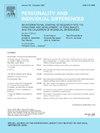认知风格与行为系统:将隐约可见的认知风格与强化敏感性联系起来
IF 3.5
2区 心理学
Q1 PSYCHOLOGY, SOCIAL
引用次数: 0
摘要
迫在眉睫的认知风格及其社会和身体亚型对个体如何感知和应对威胁有很大影响。尽管它与焦虑关系密切,但它与其他特征的关系尚未得到充分探讨。修正后的奖励敏感性理论也解释了个体在接近、回避以及对恐惧和焦虑的易感性方面的差异。目前的研究考察了行为激活(BAS)、抑制(BIS)和战斗-飞行-冻结系统(FFFS)与社会和身体隐现的关系。方法在线收集年龄在18 ~ 65岁之间的401名成年人(其中343名女性)(M = 22.78 (SD = 6.57))的数据,采用隐现认知风格、强化敏感性、焦虑和抑郁的测量方法。结果在控制年龄、性别、焦虑和抑郁症状的情况下,社会和身体隐忧与BIS和FFFS呈正相关。此外,社交隐现与BAS呈负相关。研究结果表明,社交隐现和身体隐现与对威胁的高度敏感性有关,而在社交隐现的情况下,会降低对奖励的敏感性。这些结果强调了若隐若现的认知风格在塑造焦虑相关行为和对环境刺激的反应中的作用。本文章由计算机程序翻译,如有差异,请以英文原文为准。
Cognitive styles and behavioral systems: Linking looming cognitive style and reinforcement sensitivity
Background
Looming cognitive style, with its social and physical subtypes, is highly influential on how individuals perceive and respond to threats. Despite its robust relationship with anxiety, its relationship with other traits is underexplored. Revised reward sensitivity theory also addresses individual differences in approach, avoidance, and susceptibility to fear and anxiety. The current study examined associations of behavioral activation (BAS), inhibition (BIS), and fight-flight-freeze systems (FFFS) with social and physical looming.
Method
Data were collected online from 401 adults (343 women) between the ages 18 and 65 (M = 22.78 (SD = 6.57) using measures of looming cognitive style, reinforcement sensitivity, anxiety, and depression.
Results
The findings showed that social and physical looming were positively associated with BIS and FFFS, controlling for age, gender, and anxiety and depression symptoms. Additionally, social looming was negatively associated with BAS.
Conclusions
The findings indicate that social and physical looming are linked to heightened sensitivity to threat and, in the case of social looming, reduced reward sensitivity. These results underscore the role of looming cognitive style in shaping anxiety-related behaviors and responses to environmental stimuli.
求助全文
通过发布文献求助,成功后即可免费获取论文全文。
去求助
来源期刊

Personality and Individual Differences
PSYCHOLOGY, SOCIAL-
CiteScore
8.50
自引率
4.70%
发文量
577
审稿时长
41 days
期刊介绍:
Personality and Individual Differences is devoted to the publication of articles (experimental, theoretical, review) which aim to integrate as far as possible the major factors of personality with empirical paradigms from experimental, physiological, animal, clinical, educational, criminological or industrial psychology or to seek an explanation for the causes and major determinants of individual differences in concepts derived from these disciplines. The editors are concerned with both genetic and environmental causes, and they are particularly interested in possible interaction effects.
 求助内容:
求助内容: 应助结果提醒方式:
应助结果提醒方式:


